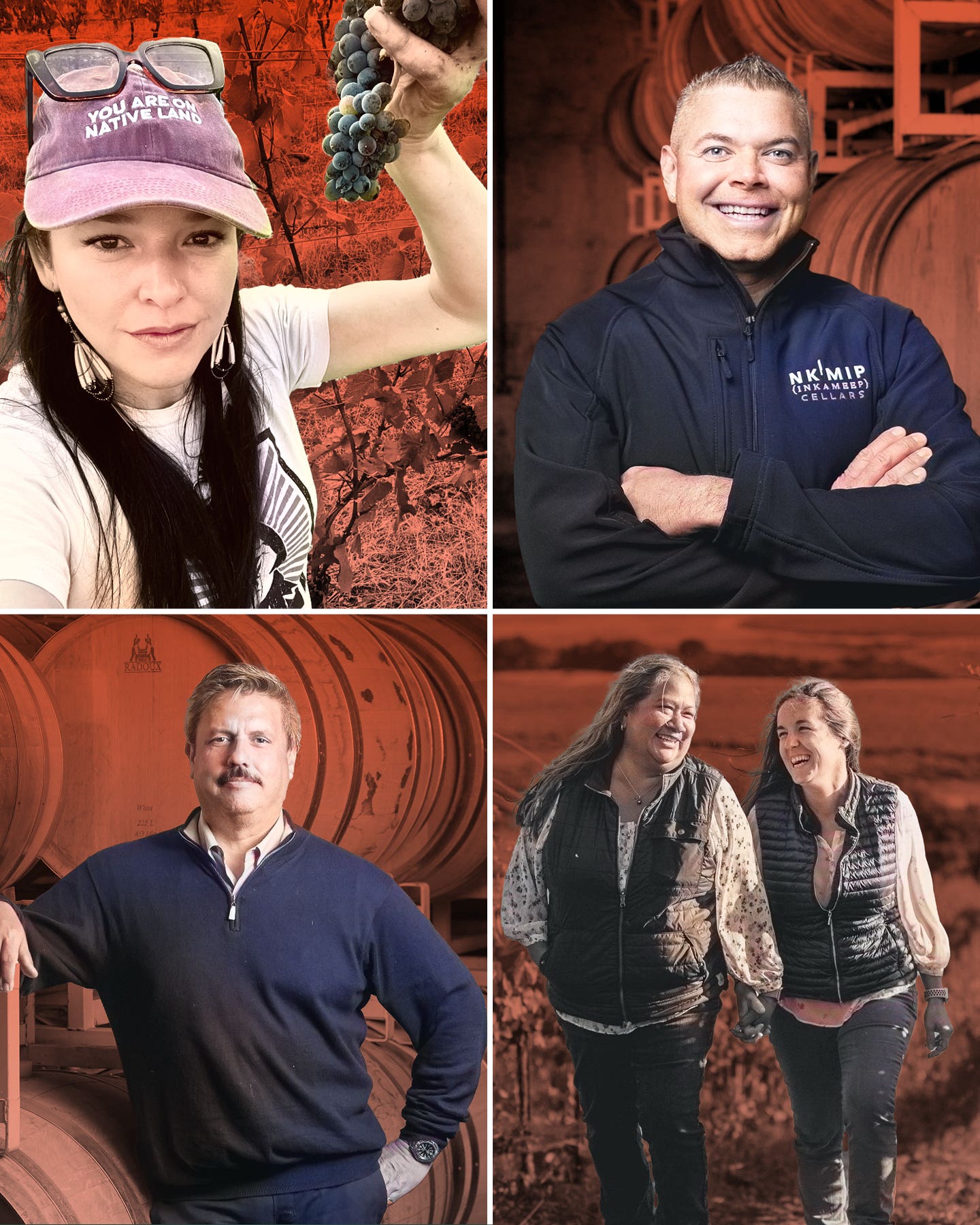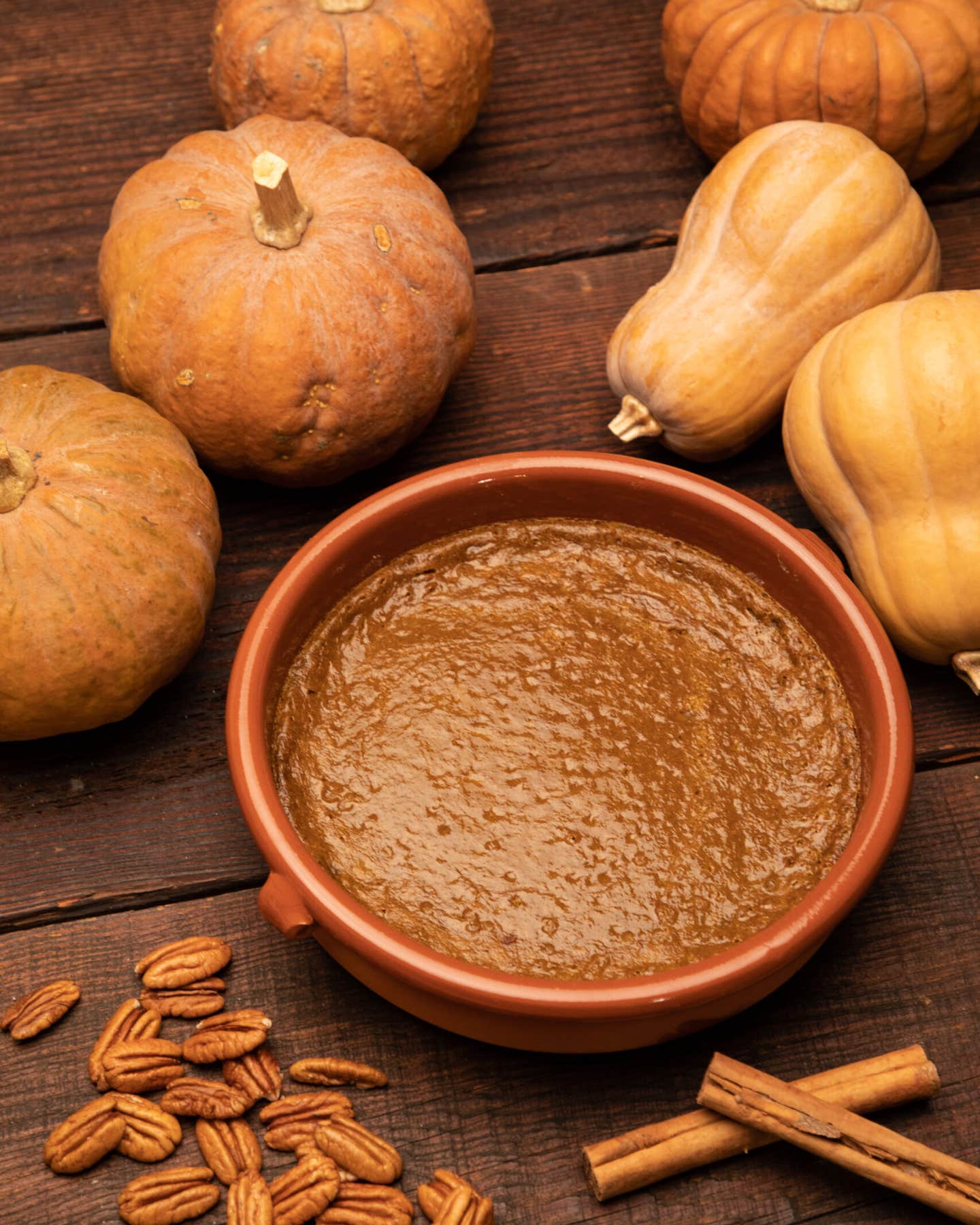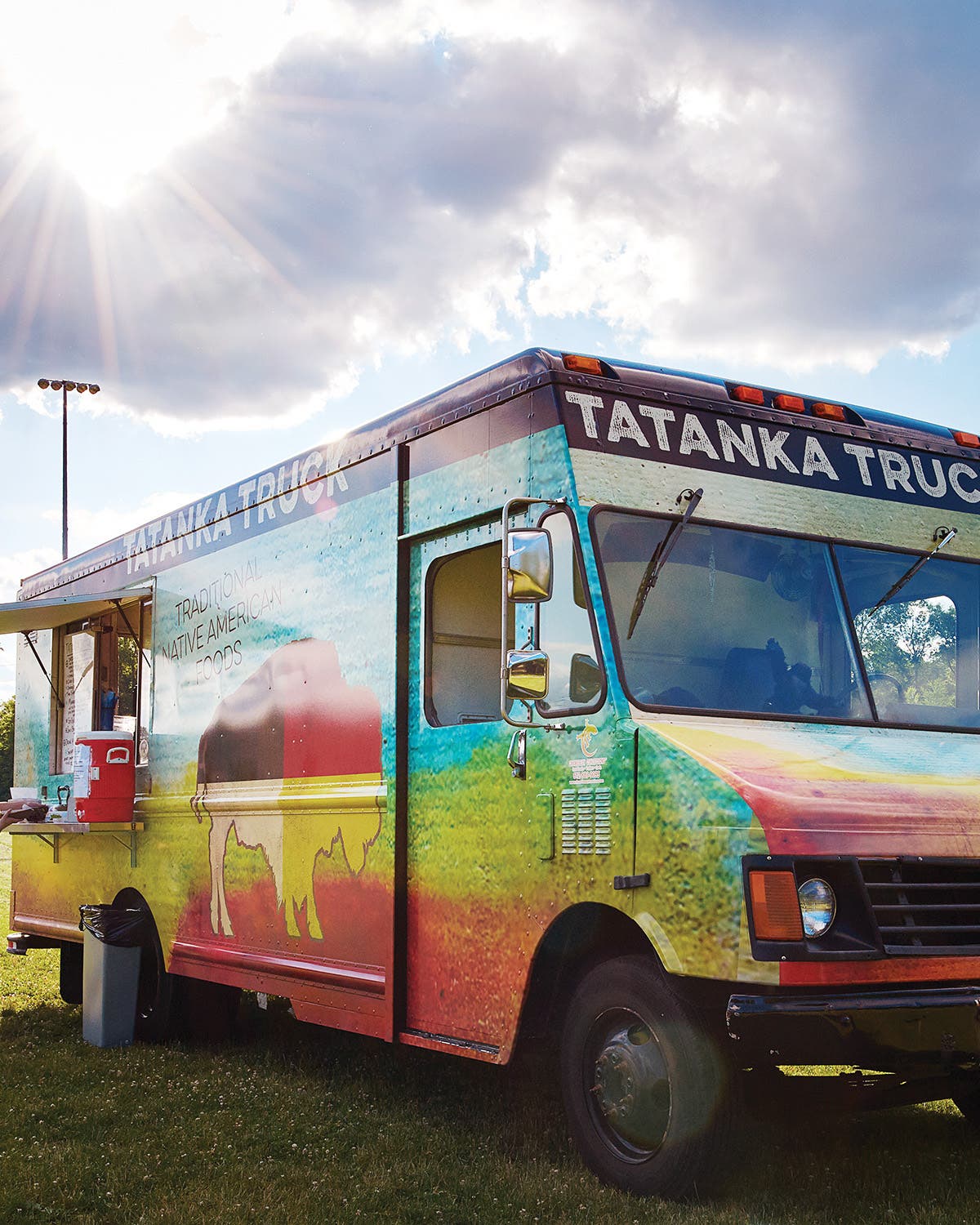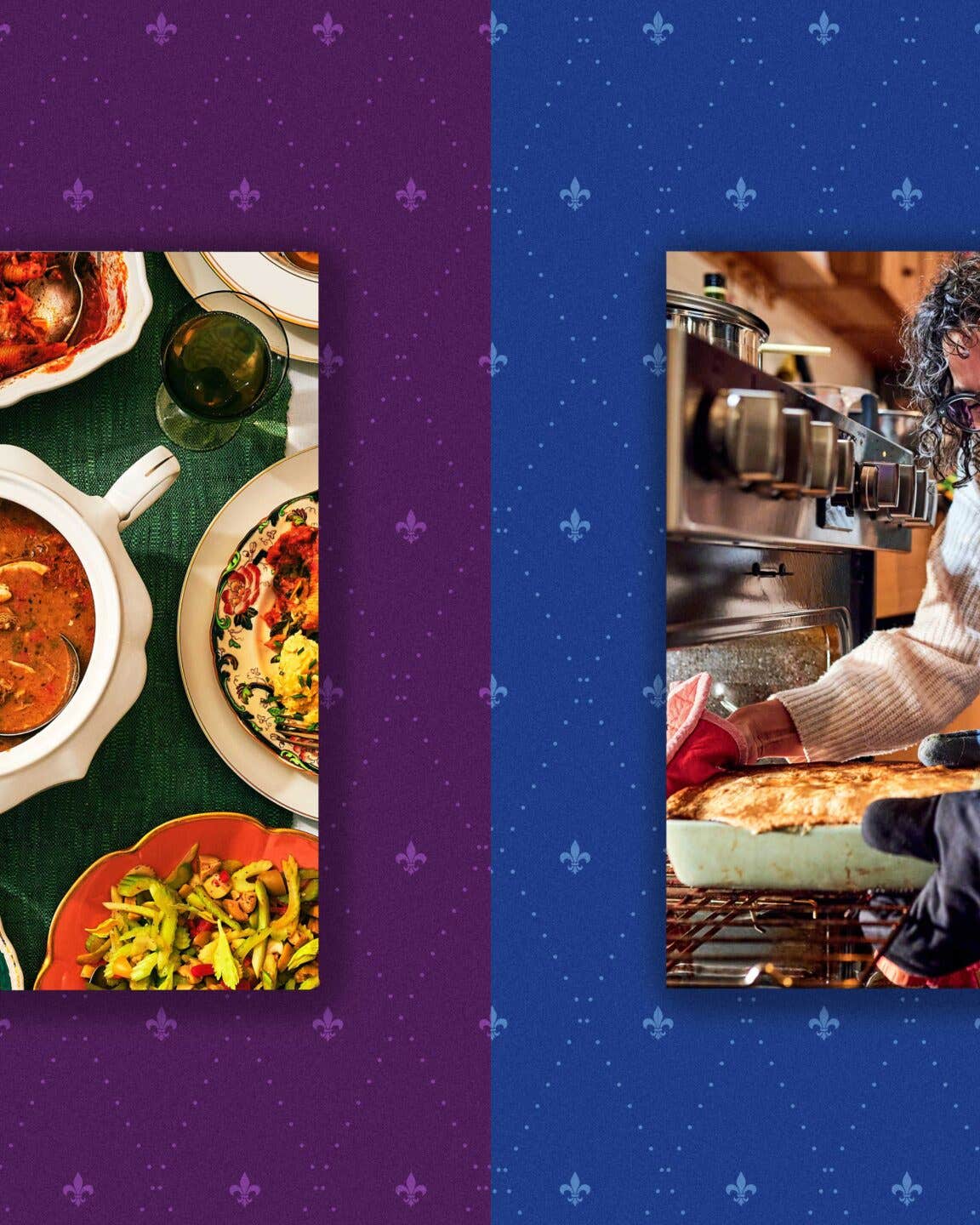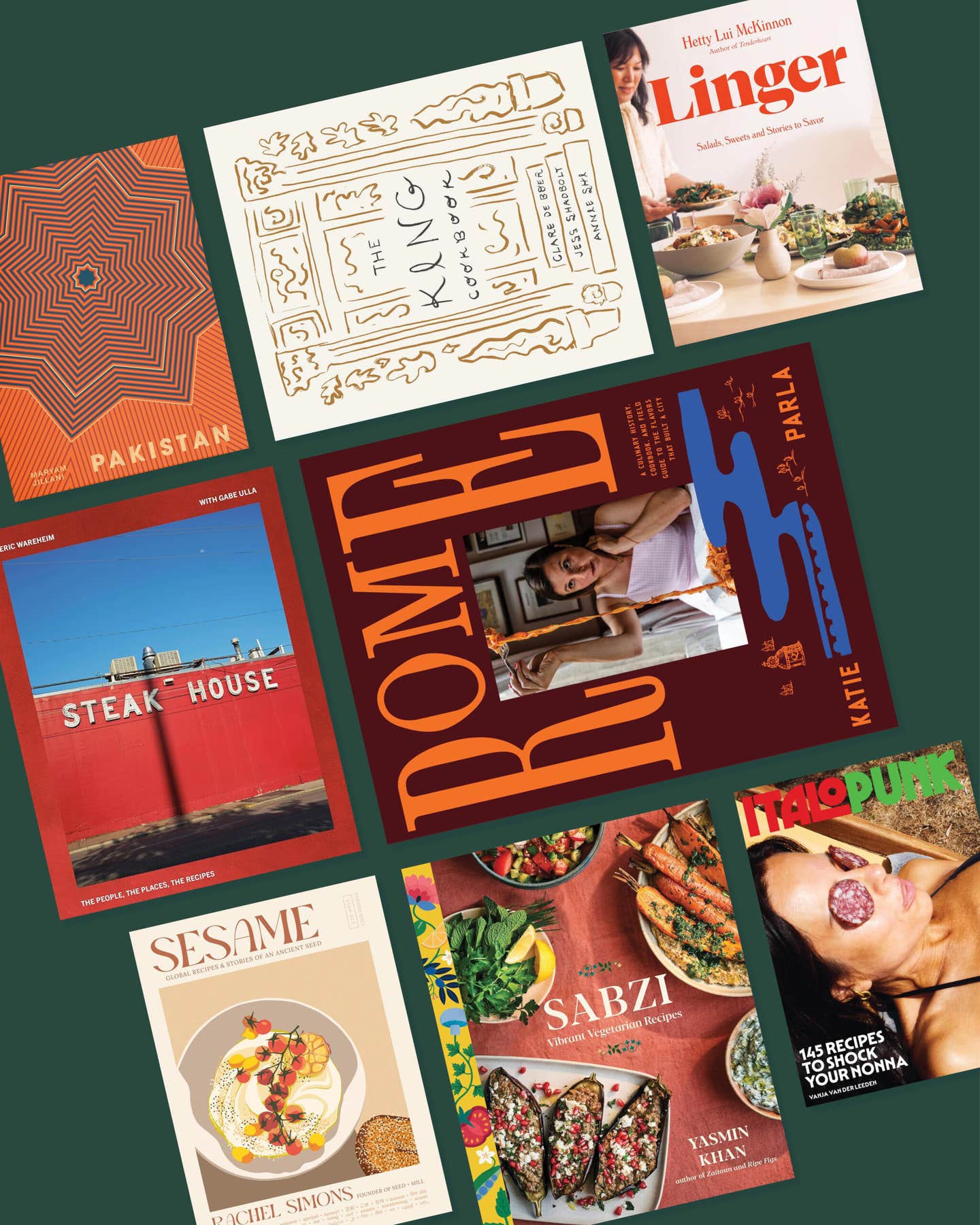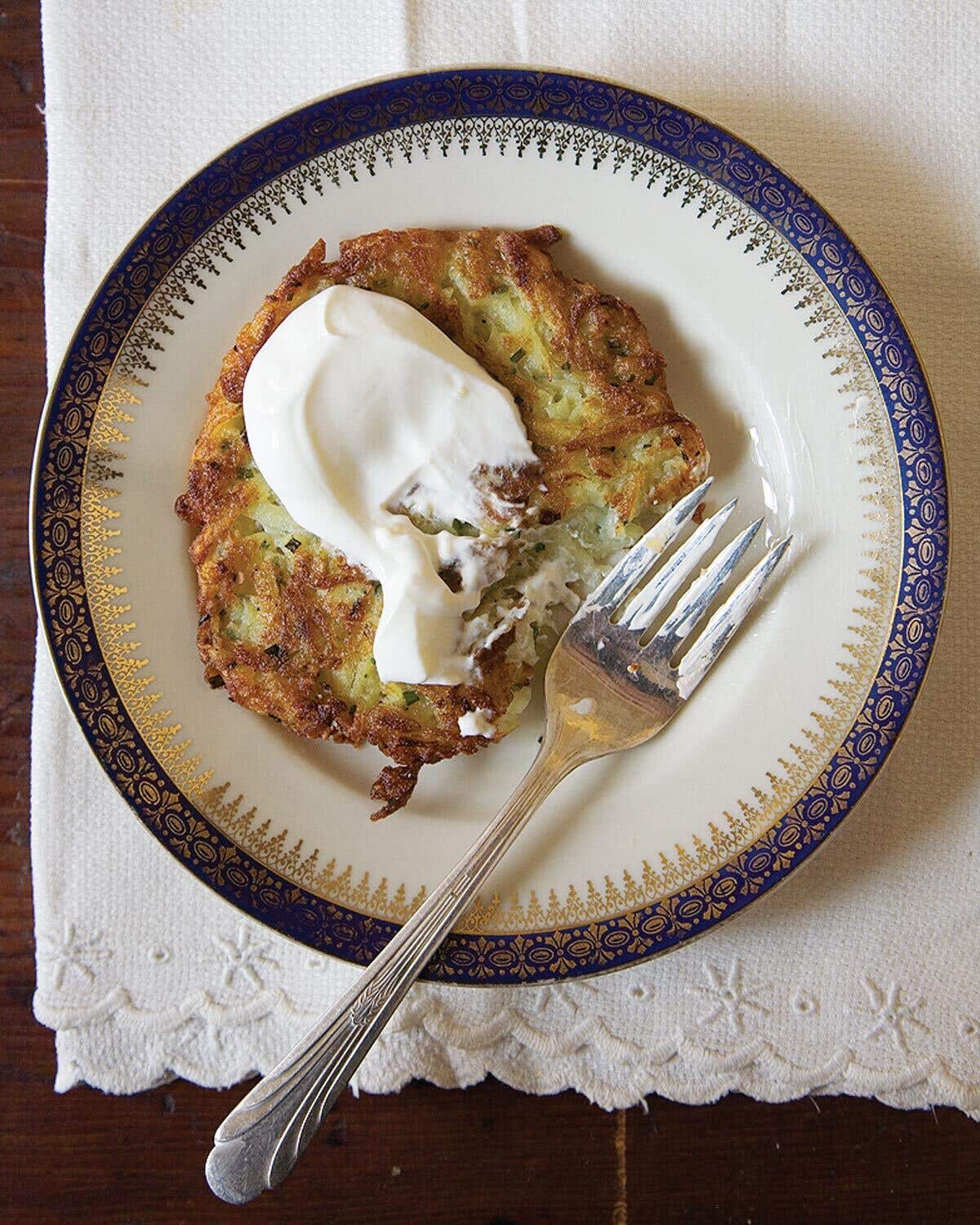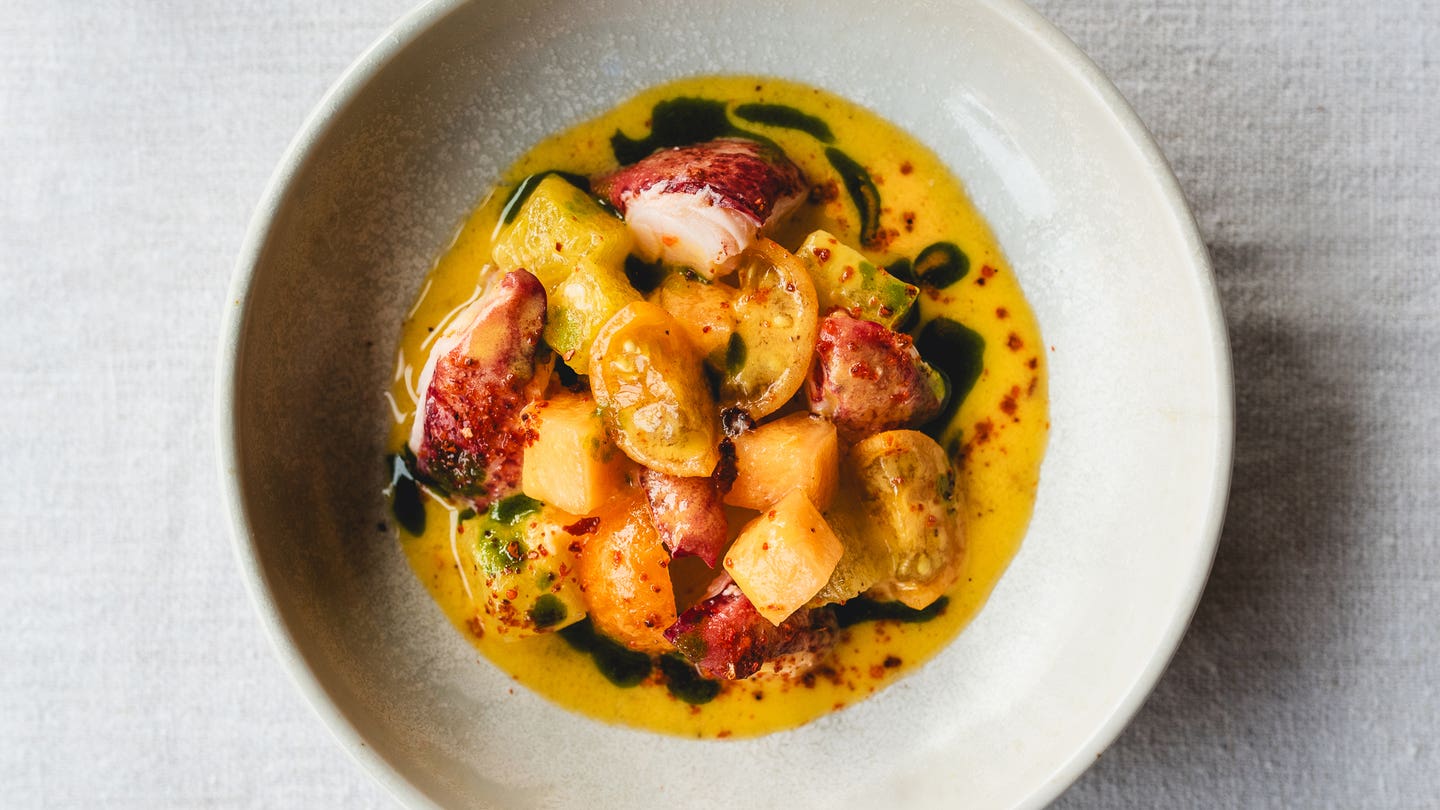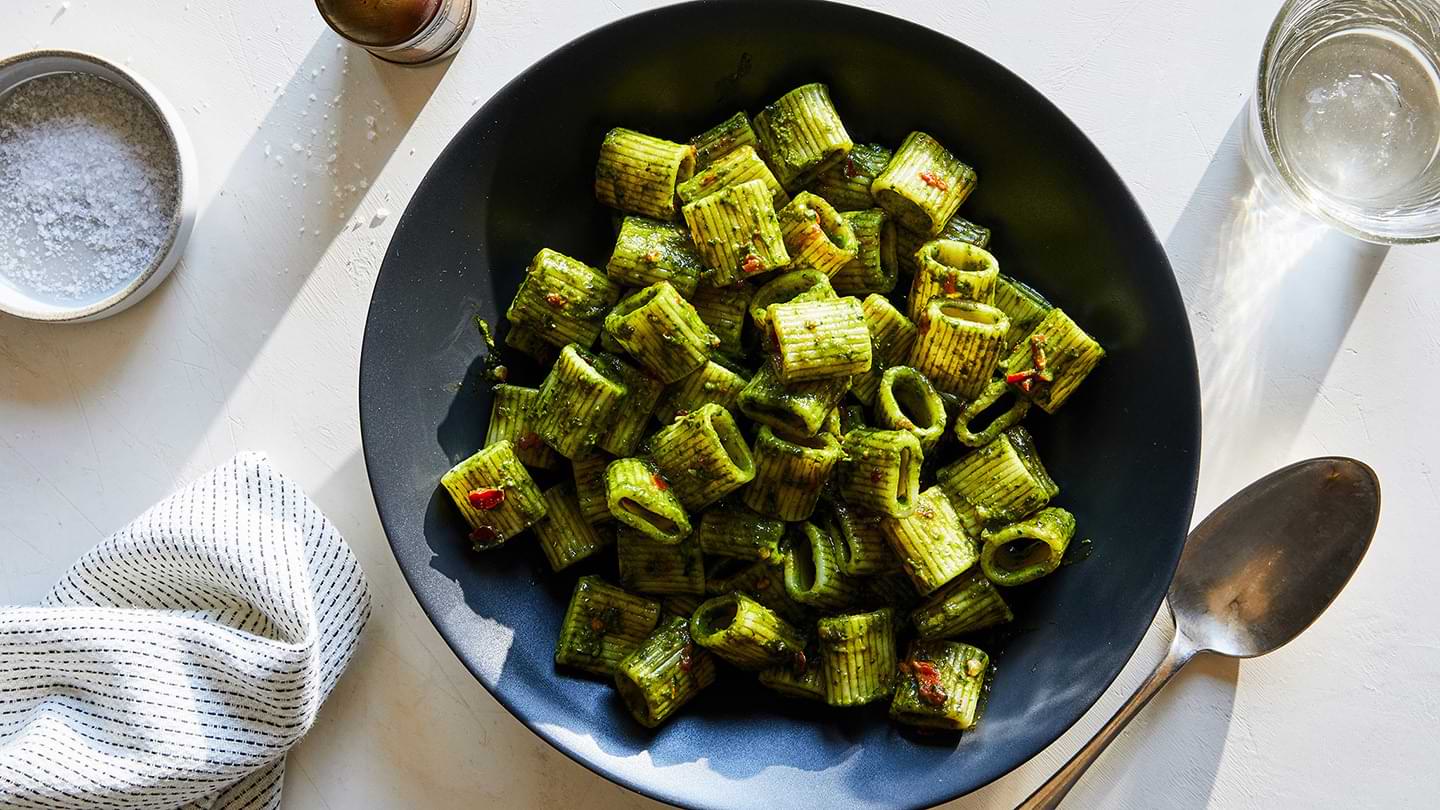The New Era of Indigenous Dining
Native chefs are redefining their foodways, blending pre- and post-Colonial ingredients into a cuisine that’s as innovative as it is ancestral.
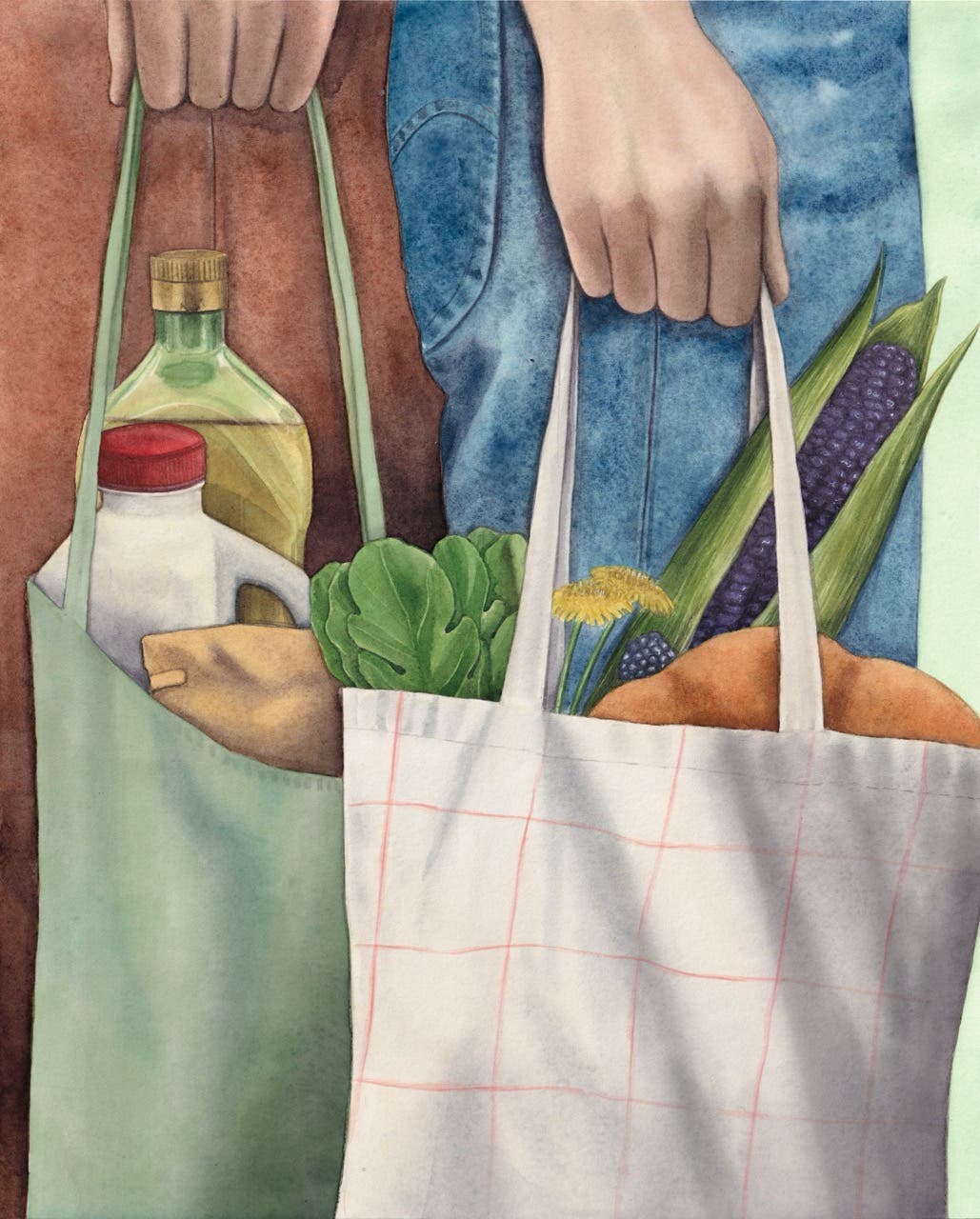
At Naagan in Ontario, Ojibwe chef Zach Keeshig avoids ingredients that settlers introduced to the Americas. Acid comes not from lemons but from morels he harvests and pickles in vinegar made from leftover apple cores. Homegrown peppery greens like arugula and nasturtium replace black pepper. He’s even working to eliminate sunflower oil—that restaurant kitchen workhorse—in favor of house-rendered animal fats.

“We forage chokecherries and make chokecherry vinegar,” he says. “Add some black garlic and birch syrup, and that’s our jus for duck.” At this “progressive Indigenous” restaurant, ingredients don’t come from grocery stores or big purveyors. Instead, Keeshig procures his own birch bark, berries, and dandelion roots; grows garlic and sweetgrass; and sources wild geese, mallard, deer, and fish from family and hunters on his reserve.
Keeshig’s DIY mentality reflects Indigenous peoples’ millennia-old approach to food. In today’s restaurant-marketing speak, Keeshig’s forebears ate “hyper-locally.” The Earth was their “on-site garden,” their live-fire hearth, their “zero-waste kitchen.” Cultivating the Three Sisters (squash, beans, and corn) remains a paradigm of agricultural genius, with each plant supporting the life of the others. Because ingredients introduced by colonizers—flour, sugar, dairy, and man-made oils, now staples in both Indigenous and settler kitchens—carry the weight of a violent history, Indigenous chefs like Keeshig face a choice: whether to include them, or not, in their interpretations of Native cuisine.

Few chefs think as deeply about what, how, and whom they serve as those leading Native restaurants across North America today. Their mission statements go far beyond “We support local farmers” slogans: They include clear objectives, education initiatives, efforts to restore food sovereignty (breaking dependence on non-Native food sources), strategies to reduce food insecurity, and flexible pricing so underprivileged Indigenous guests can afford to dine. Part of Enoch Cree chef Shane Chartrand’s mission at Paperbirch by Chartrand, his farmer’s market-based “food hub” in Alberta, is to foster healthy communication between non-Indigenous and Indigenous people. “The most important thing you take away from a dinner here is you have a new understanding of how to treat people,” he says.

“You shop in season,” says Kickapoo chef Crystal Wahpepah of Wahpepah’s Kitchen in Oakland, California. “Maple is expensive, but if it’s in season, it’s less so.” She finds the challenge of getting the good stuff from the good purveyors at the right time of year rewarding. “People order the blue corn bread and cry because, for whatever reason—maybe they left the reservation—they haven’t had blue corn since they were children.”
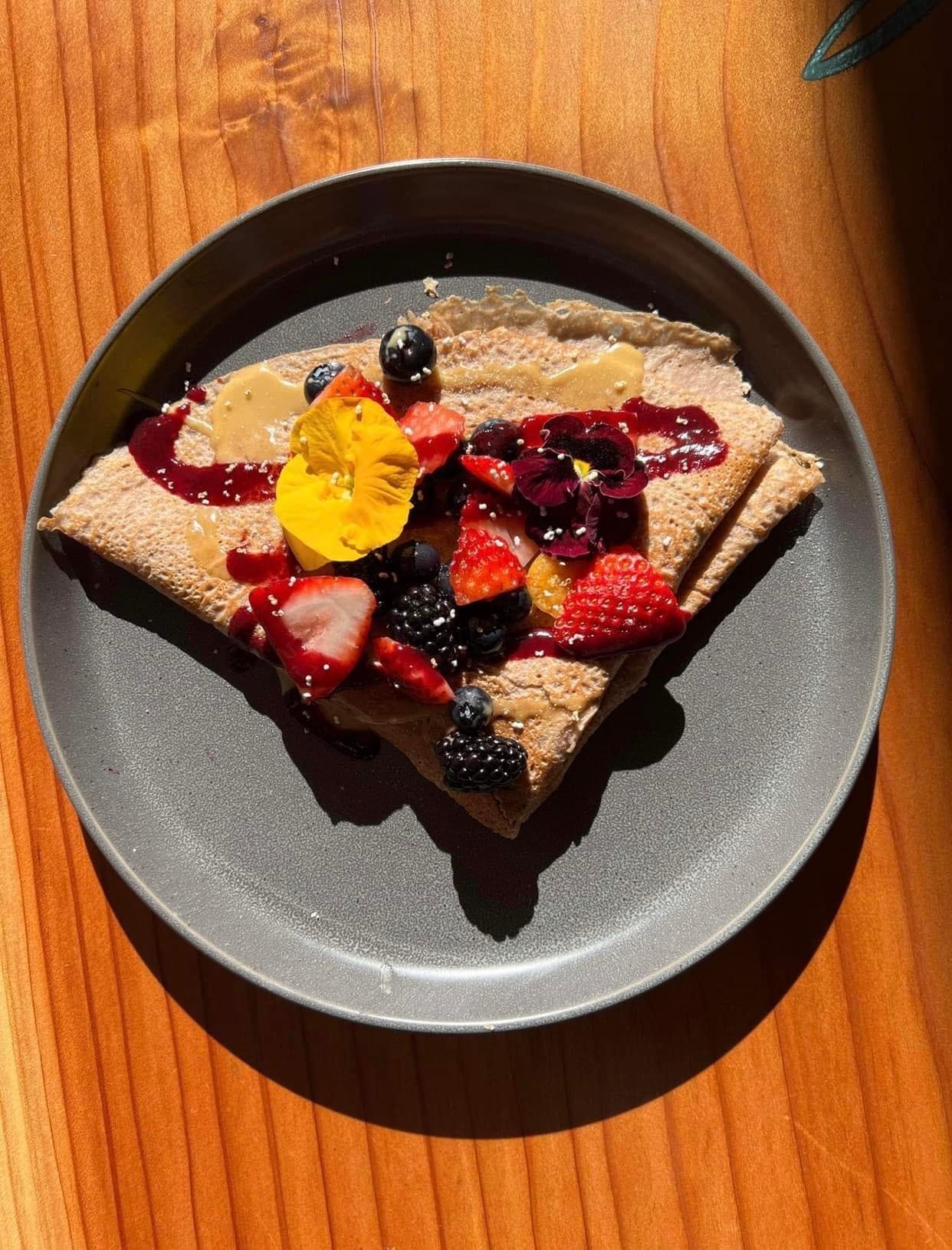
These chefs are also hyper-sensitive to waste, honoring the ways of Indigenous hunters: “When [non-Native] hunters dine here,” says Choctaw chef David Skinner of Ishtia in Kemah, Texas, “they can’t believe venison cheek is so good. They’re used to throwing it out with the head. You wouldn’t believe how much good meat is in the head. You just have to dig for it.” For his dish Deer in the Woods, Skinner braises the cheek for nearly ten hours, wraps it in potato ribbons, fries it, skewers it, and serves it in a potted plant.
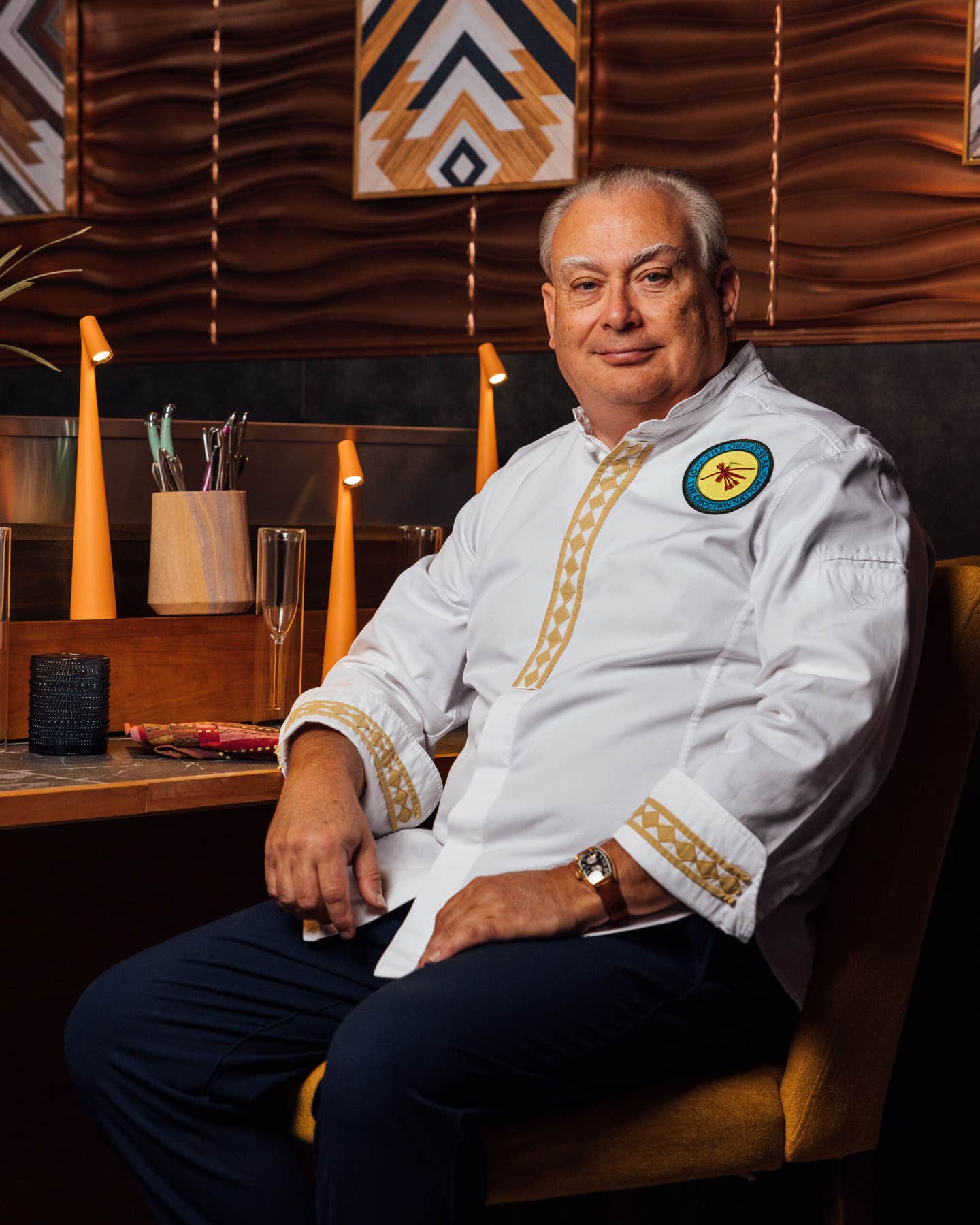
Long before people hunted for sport or ate primarily for pleasure, many tribes made pemmican—a dense, long-lasting mix of pounded, fat-saturated dried meat and berries. The ingredients varied by region, from elk to rabbit to eel, and from chokecherries to saskatoons to currants—but the finished product packed far more calories than meat alone. Pemmican epitomized sustainable, responsible food systems: Each person consumed only what was needed to survive, no more, no less.
After Columbus’ arrival, non-Indigenous settlers not only took the land; they extracted all they could from it, decimating animal populations, favoring cash crops like sugar over native plants, and prioritizing large-scale production. This approach was the precursor to today’s commercialized food industry.
Over the centuries, consequences for Native health have been stark. By the 1940s, diabetes—a disease once rare among Indigenous peoples—was widespread. Centuries of land theft, broken treaties, discriminatory policies, and systemic racism have left these communities grappling with nutritional deficiencies, chronic disease, and the lowest life expectancies in the country. Today, one in four Native people—compared with one in seven Americans overall—face food insecurity.
Chef and Native food historian Lois Ellen Frank, Ph.D., divides the historic continuum of Native cuisine into four eras: Pre-Contact (until 1492), First Contact (1492 to the 1800s), Government-Issue (mid-1800s through the late 1980s), and New Native (late 1980s to today). “‘First Contact’ refers to people’s first contact with a culture outside of Indigenous America,” Frank explains. It was during this period that Europeans introduced dairy, wheat, and domesticated animals.
By the mid-1800s, when Native peoples were forced onto reservations, the U.S. government issued rations of lard, flour, sugar, coffee, Spam, canned corned beef, and other nutritionally poor foods. One recipe that emerged from that Government-Issue era was fry bread (known in Canada as “bannock”), now a fixture at ceremonies and gatherings. Made from flour, salt, and water, then deep-fried, the dish raises a complicated question: Is it acceptable to call a processed snack borne of Colonialism “Indigenous food”? Some say yes; others see fry bread as a testament to the resourcefulness of Native peoples. In the New Native era, Frank explains, chefs get to make choices that their ancestors were denied.

If anyone has put the food of the New Native era on the map, it’s Sean Sherman, aka The Sioux Chef, whose accolades include three James Beard Awards and a spot on Time’s “100 Most Influential People” list. Sherman does not want fry bread on the menu. His purist approach at Owamni in Minneapolis is wholly “de-colonized,” reflecting the values of his nonprofit, North American Traditional Indigenous Food Systems, and its mission to restore Native food sovereignty.
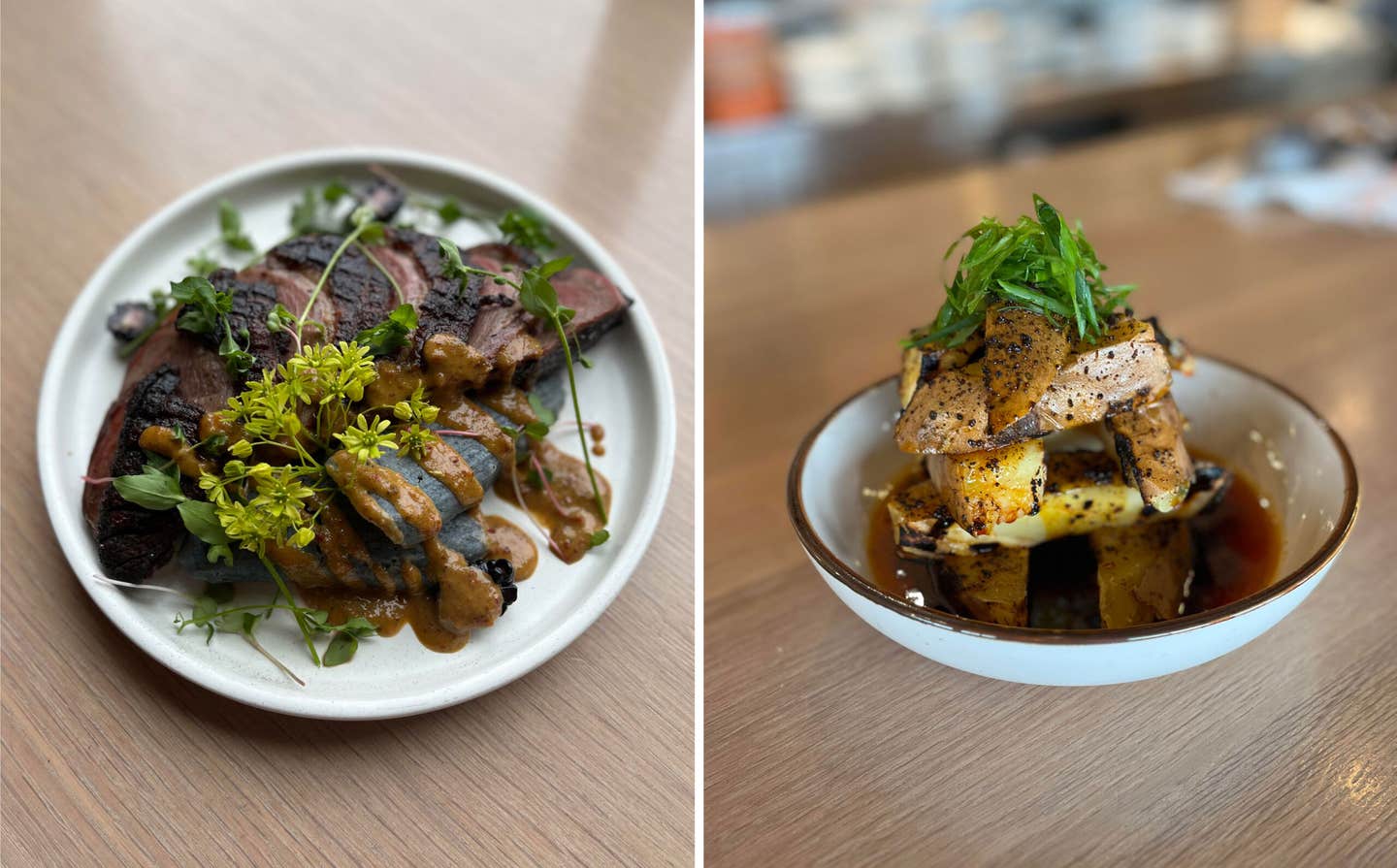
He rejects post-1492 ingredients, monoculture farming, and extractive industries outright. He relies primarily on Native purveyors. For cocktails like the sumac old-fashioned, he sources bourbon and sumac bitters from “BIPOC, non-binary, and femme-presenting” producers.
Inez Cook, owner of Salmon n’ Bannock in Vancouver, does want fry bread on the menu (or in her case, baked bannock), in dishes like salmon mousse with bannock crackers, sautéed mushrooms on toasted bannock, and berry jam bannock bowls. She respects other chefs’ decisions to reject it, given its trauma-laden history, but also celebrates the Indigenous spirit the recipe embodies.
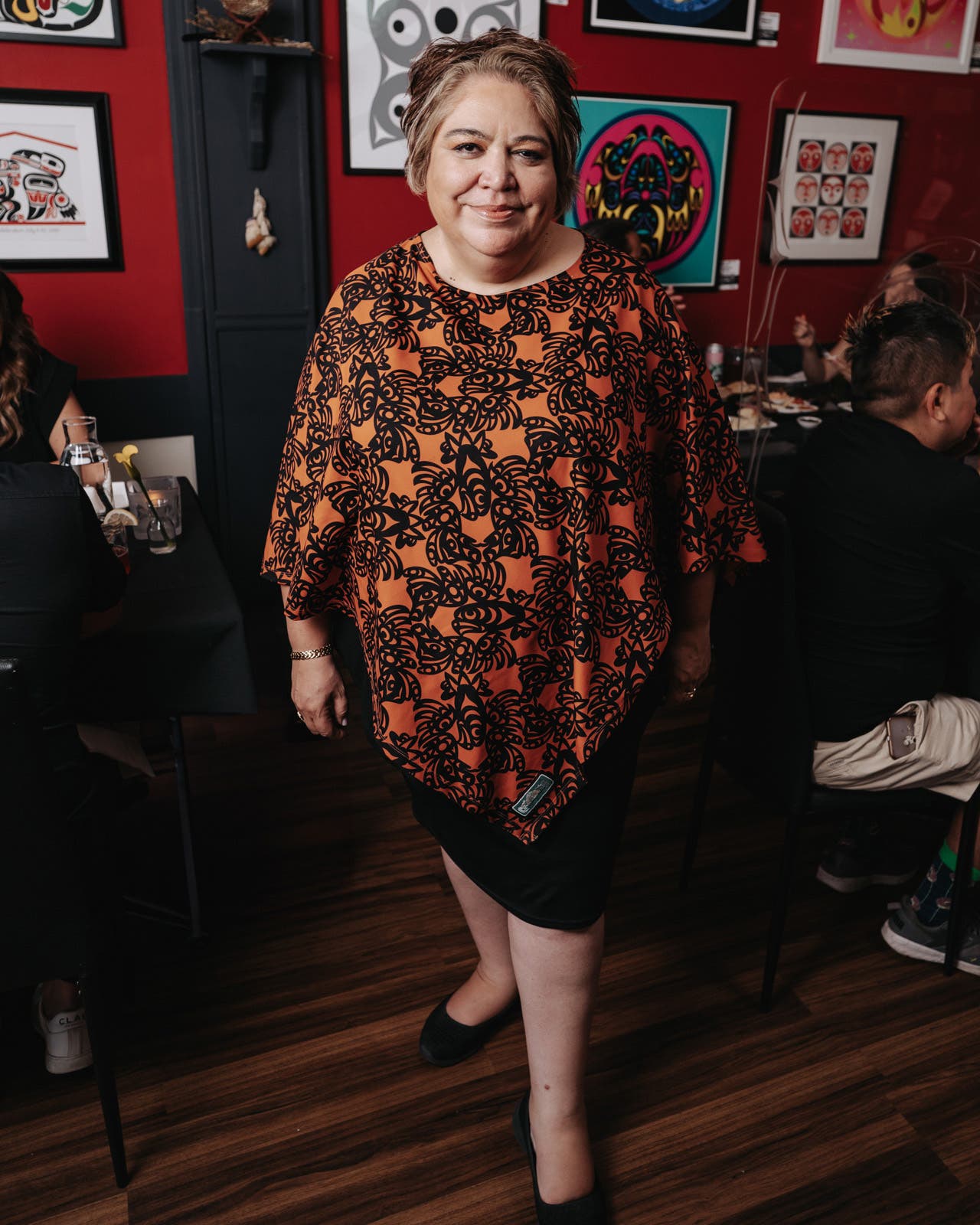
“Canada has lots of dirty little secrets involving Indigenous people,” says Cook, a survivor of the 1950s–1980s Sixties Scoop, when the Canadian government sanctioned the kidnappings of 20,000 Indigenous children. “It’s important to discuss the bad things, but I like celebrating the good as well.”
Cook enjoys adapting Indigenous foods to the modern palate—smoking fish in-house with smudge-stick smoke, for example, and infusing cherries with sweetgrass. She’s less concerned with self-imposed restrictions than with those imposed on her, including laws prohibiting the sale of wild game that prevent her from serving traditional foods. “We’re the only Indigenous restaurant in Vancouver proper, and we’d be shut down for serving moose meat,” she says. “Imagine if in Paris there was one French restaurant, and they weren’t allowed to serve French food.”
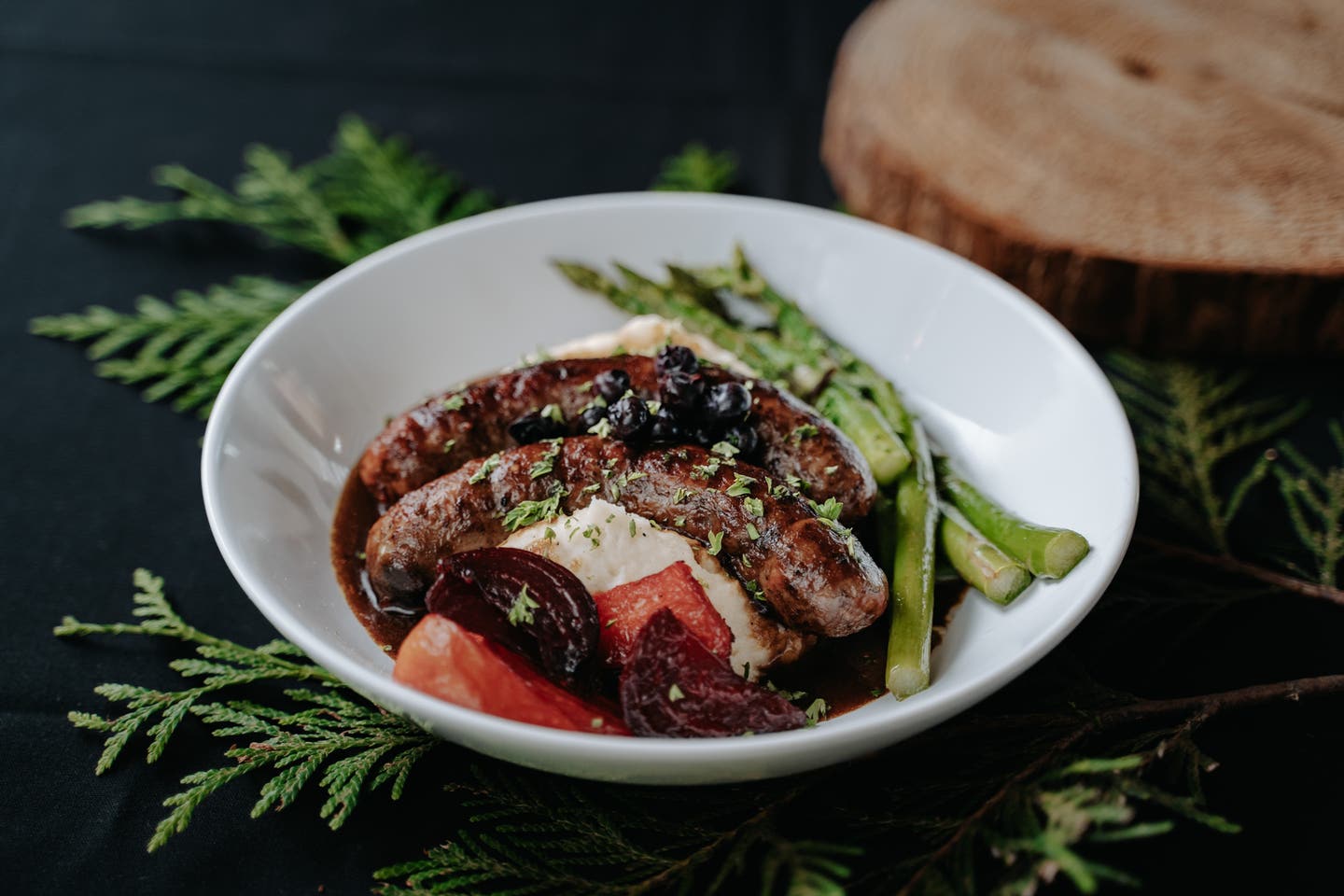
Laws against selling wild game vary across North America, and exceptions exist, but no loophole can neutralize the irony: Centuries after colonization, commercial hunters—the opposite of Indigenous subsistence hunters, who took only what they needed—ravaged waterfowl, mule deer, bison, and other species to sell at market. Laws prohibiting the sale of wild game didn’t appear until the 19th and 20th centuries, only after populations were already in crisis. That’s why Inez Cook can’t serve moose and David Skinner can’t serve Choctaw hog.
Because many tribes transmit their traditions orally, countless recipes—as well as stories and customs—have been lost to time, Colonialism, or both. Each Indigenous-restaurant menu, then, becomes something novel: a tangible document of ancient knowledge.

At Ishtia, Skinner—who studied the cookbook of official Choctaw food historian Ian Thompson, Ph.D.—burns smudge sticks, lets diners wave the smoke around with a feather, and explains that sage smoke kills evil spirits, thereby purifying the space and the people in it. “There is scientific research pointing out the benefits of sage smoke,” he says. “Not sure about the evil spirit part, but it kills bacteria for sure.” He also serves “edible smudge sticks”—handheld salads of pesto, walnuts, and sumac tied with chives and presented in river-cane baskets.
Skinner reads a poem he wrote about the Trail of Tears to diners: “On a trail of tears, under sorrow’s veil / Echo footsteps of a heartbreaking tale…” He then serves his interpretation of the Three Sisters: a fresh diver scallop on the half-shell, ringed by corn and a purée of three squashes, garnished with flowers from his on-site garden and a black tepary bean gel. The dish arrives billowing dramatically on dry ice and, tableside, he performs a pour-over of salt water derived from Monterey Bay seaweed. The ingredients are pre-Colonial; the presentation is avant-garde.
He sources from Indigenous producers but doesn’t obsess over absolute purity. “You can pigeonhole yourself and say, ‘I’m only going to buy local,’ but ‘local’ might not be the best food,” he says. “I would not want to eat a scallop from Galveston Bay.”
There’s a fine line between pigeonholing and working within inspiring parameters. For chefs like Skinner, the goal is not to privilege ethos over flavor but to communicate to diners: “Let’s honor the beautiful way we used to eat.” The nixtamalized blue corn bread at Wahpepah’s Kitchen contains flour. Cocktails at Owamni are mixed with liquor. Whatever Skinner adds butter to technically becomes a fusion dish. Fusion doesn’t have to be a concession, though; it can be a triumph. No longer forced to depend on Colonial ingredients, Indigenous chefs now adapt them to their purposes.
As more Native restaurants enter the mainstream, perhaps future Indigenous chefs will ask not “Which ingredients should I avoid?” but “Which can I resurrect?”

“Sean Sherman does no flour, no dairy, no sugar,” says Wahpepah. “That’s fantastic. But for me, it’s about highlighting ingredients: heirloom beans, black oak acorns, Buffalo Creek squash.” She notes that until five or ten years ago, many foods Indigenous people grew up on weren’t on menus at all. “People have access to these foods now. They didn’t before.”
When Keeshig was developing Naagan, he asked his tribe’s elders for written recipes. They didn’t have any. “I’m not sure if that’s because of Colonialism or if that’s just part of our culture, but it made me think: Who’s to say what’s Indigenous food and what isn’t? Who’s to say I can’t grow sweetgrass, make sweetgrass ice cream sweetened with unpasteurized honey, and cover it with caramelized bee pollen?”
Even Sherman acknowledges that returning to pre-1492 isn’t really the goal: “Decolonizing isn’t about just pretending colonization never happened and trying to go backwards,” he says. “It’s about pushing against the values colonization has normalized.” He’s referring to a value system that rejects the foodways—not to mention the knowledge—of those who have always lived in the Americas.
At Paperbirch, Chartrand—who avoids flour, man-made fats, and liquor—offers “Cree culinary experiences” to ten diners at a time seated around the counter. During dinner, he shares Cree lore and stories he’s learned from other tribes during his travels. “One thing people don’t understand,” he tells diners savoring elk dumplings and hickory-smoked scallops, “is why you get those twitches at night that wake you up.” According to the Stoney Nakoda people, he explains, a twitch signals that you went about your day without first inviting your spirit to come along. “That twitch is your spirit,” he says. “It’s finally catching up to you.”
Keep Reading
Continue to Next Story
